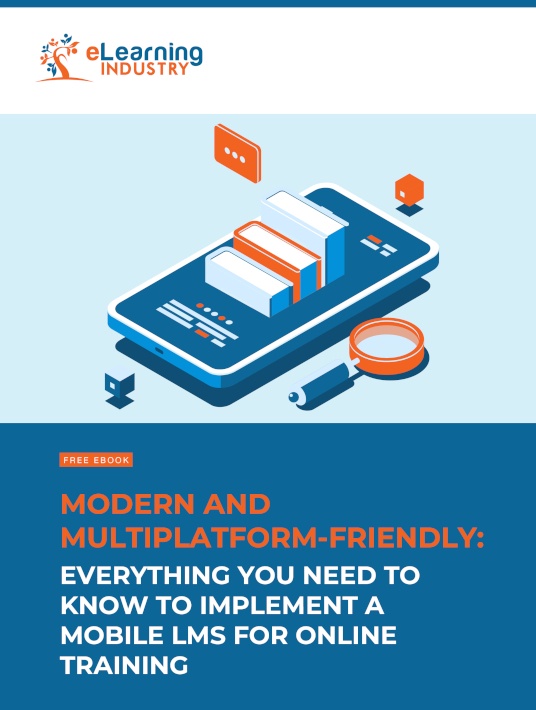6 Tips To Develop A Realistic Timeline When Implementing An LMS Mobile App
What measurable steps are involved in implementing new office systems? With LMS, you have to familiarize the team that will administer it, ensuring they’re acquainted with features and tools. Even if there are how-to’s or ‘helpers’ inside the platform, your admin will still handle the bulk of user questions. Then you have to download the app onto everyone’s device and create their user profiles or show them how to do it themselves. You have to train colleagues on how to use the LMS itself. That’s before they get into their individual eLearning courses. How do you decide the right timespan for all of this? Here are 6 tips to develop a realistic timeline for mobile LMS implementation.

1. Distinguish Development From Usage
Building an app could take anything from two hours to two years. Learning to use the supposed app could take minutes. If the app is built for corporate spaces and is done using in-house training apps, the learning curve will be accelerated. Your staff is already familiar with their mobile LMS, so transferring those skills to app usage should be easier. Before you commit any timelines to paper, talk to your techies. They’re generally structured, because of the nature of their work. Get your estimates from coders, not from the Head of Marketing or Digital Interface Manager that’s championing this project.
2. Identify Gaps Beforehand
If you’re unsure about the actual amount of labor involved, ask them what the app entails. Find out exactly what you need the app to do. Which skills will it train? Which functionalities does it require? Talk to multiple departments about their needs. You can even run surveys on what your team wants to see in an app. Armed with this list, approach your programmers. Go through each feature, getting time estimates. They can advise you on features that can be merged or safely omitted to save time, but without diminishing the quality of your training tools. Whatever estimates they give per task or feature, add a few hours as lagtime. This provides some leeway for contingencies.
3. Check Expectations
The best way to know how long this all takes is to test it. You could pick a random sample of five employees. Take them through the process and average their times. Another approach is to test it out on your highest and lowest ranking employees, the boss and the intern. Or your youngest and oldest. It could even be your top netizen as well as your in-house luddite. The more diverse your testers, the more reasonable your implementation estimate. Just ensure the assessment process is low-pressure, making sure your results are more authentic. For example, don’t notify anyone who is in the testing pool. It might cause competitiveness which will corrupt your results. If you must, have them sign NDAs until the test phase is complete.
4. Leave Sufficient Room For Mastery
There’s a difference between function and fluency. If you can communicate in a foreign language, you can perform basic tasks such as asking for directions or ordering a meal. Fluency, on the other hand, means you can distinguish between subtle nuances. In-app implementation terms, the MVP perspective (Minimal Viable Product) varies for users versus developers. Users might only want to know where tutorials are filed and how to open them (2 to 5 minutes). This is enough to make them comfortable using the app.
5. Define Your MVP
Include the outer duration in your implementation timetable. And remember that MVP applies separately to app development and app usage training. Define the quickest turnaround for basic functionality. The LMS can be refined and upgraded after it’s already in use. It will be easier this way because users can point out what doesn’t work, what is missing and what requires adjustment. Just be sure real-time feedback tools are fully functional at the launch. This facilitates those ongoing improvements we’ve mentioned.
6. Get The Vendor’s Input
If you aren’t developing the LMS mobile app in-house and are purchasing a pre-built product, ask the vendor about their support services. This can help you develop a more realistic timeline because you know what you’re working with. For example, they provide online training tutorials and one-on-one support for the first week to reduce the learning curve. Which means that you’ll probably be able to expedite the implementation process. On the other hand, if they leave you to your own devices after purchasing the product, the timeline will be prolonged. You may have to hire a consultant or train someone on your team to handle the mobile LMS implementation and field questions.
Picking the right mobile LMS is the first step in a long implementation process. And meeting deadlines begins with setting smart ones. In a corporate world ruled by facts, figures, and timelines, how can you prepare the right estimates? Use a separate ‘clock’ for app development and app onboarding. Spot the gaps you want to fill and the features you need to build in. Set aside adequate time for each task, and decide your definition of the minimal viable product. Factor in the size and scope of the app and use your boss (and intern) to craft average training duration. And once timelines are set, check-in frequently to make sure your resident procrastinators don’t fall into last-minute panic.
What are the advantages of developing an eLearning app with a mobile LMS versus using a mobile-optimized one? Download our eBook Modern And Multiplatform-Friendly: Everything You Need To Know To Implement A Mobile LMS For Online Training to find all the tips on how to use a mobile LMS to implement modern and multiplatform-friendly training. You’ll discover the top mobile learning trends to consider before investing in your new system, as well as mobile LMS must-haves that can stretch your budget and improve ROI. There’s even a list of the most common implementation mistakes to help you avoid costly catastrophes.









